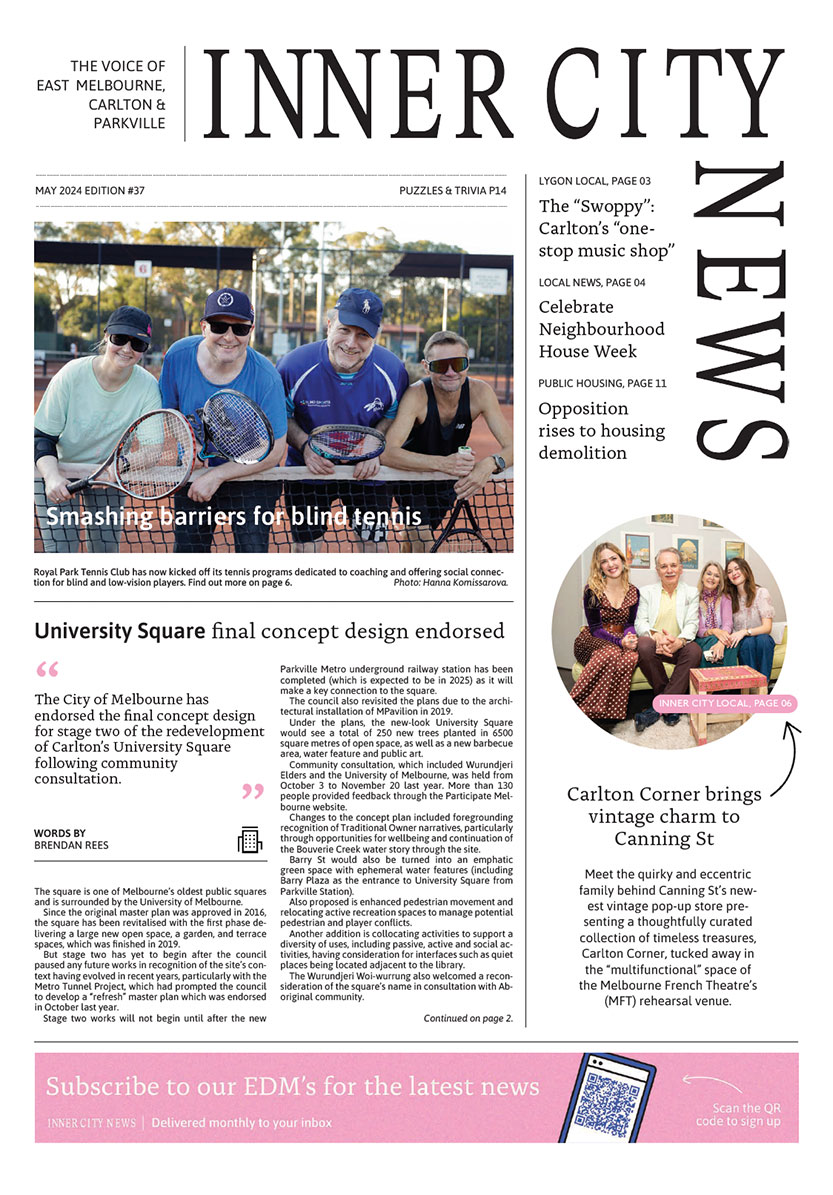Heritage does matter
A new book, launched at the Melbourne Town Hall recently, highlights the effectiveness of communities when they work together to preserve the amenity of their suburb.
Heritage Matters: Seventy Years of the East Melbourne Group, 1953-2023 was written by Jill Fenwick OAM, a long-time resident of East Melbourne, former president of the East Melbourne Historical Society for 13 years, and a life member of the East Melbourne Group (EMG).
The book details the extent to which the community of East Melbourne and Jolimont have had to fight to preserve the essence of their edge-of-CBD suburb.
The EMG began in 1953 when local residents noticed that City of Melbourne workers were chopping down the mature elm trees that had lined the streets for decades, helping to define the East Melbourne as a desirable residential garden suburb.
The argument was given that removal of the trees would allow more cars to be parked in the streets and would also help to “modernise” the suburb. The residents were outraged at this infringement of their amenity and lack of consultation, and lobbied the council. But their protests took time, and they were only able to preserve one small section of the trees in George St.
Since that time, the residents have grappled with many issues, including the demolition, prior to the Heritage Act 1974, of many irreplaceable properties of outstanding heritage value, which gave way for nondescript blocks of flats. The imposition of walls of high-rise buildings was a major challenge in the 1980s, along with the creeping expansion of several hospitals.
A major intrusion into the liveability of the suburb has been the changes to the operation of the MCG: introduction of Sunday football, the massive amount of parking which has been allowed to churn up and erode the parklands, and “the highest set of stadium lights in the world”. The promise that the lights would be used only 10 times a year was laughable and soon abandoned.
More recently, the introduction of façadism in East Melbourne, as shown so confrontingly on the cover of the book, reveals the money-centric political and market forces shaping the suburb.
This trend for political and market forces to challenge the ethos of this quiet, residential suburb was evidenced most recently when political forces aligned against the community voice to agree to an extension of a restaurant in a small boutique hotel, to a 148-seat public facility with no controls over parking or noise. Fortunately, this was the latest battle won by the EMG.
To a crowded audience, the book was launched by former Chair of the Heritage Council of Victoria Professor Graeme Davison, who remarked that in its 70 years, “the EMG has played a part well out of proportion to its numbers in the wider heritage movement and its history is accordingly of much more than local interest”. Quoting an early president of EMG who stated that “A city without a history is a city without a soul”, Graeme said that the EMG was a pathfinder in heritage territory that had yet to be named and mapped, and has a claim to be Melbourne’s, perhaps Australia’s, first modern urban heritage group.
In Graeme’s words, the EMG’s “concept of heritage was much wider than just architecture. It was determined to conserve their suburb’s distinctive character defined by a subtle combination of height, width, scale, setbacks, streetscape, plantings, even its freedom from noise and artificial light”.
As a former CEO of Heritage Victoria put it, “the EMG must be congratulated for its long-term persistence and ability to strike fear into the heart of politicians, councillors and developers”.
The book retails for $34.95 and is available from Anchor Books Australia, anchorbooksaustralia.com.au •

University Square final concept design endorsed





 Download the Latest Edition
Download the Latest Edition